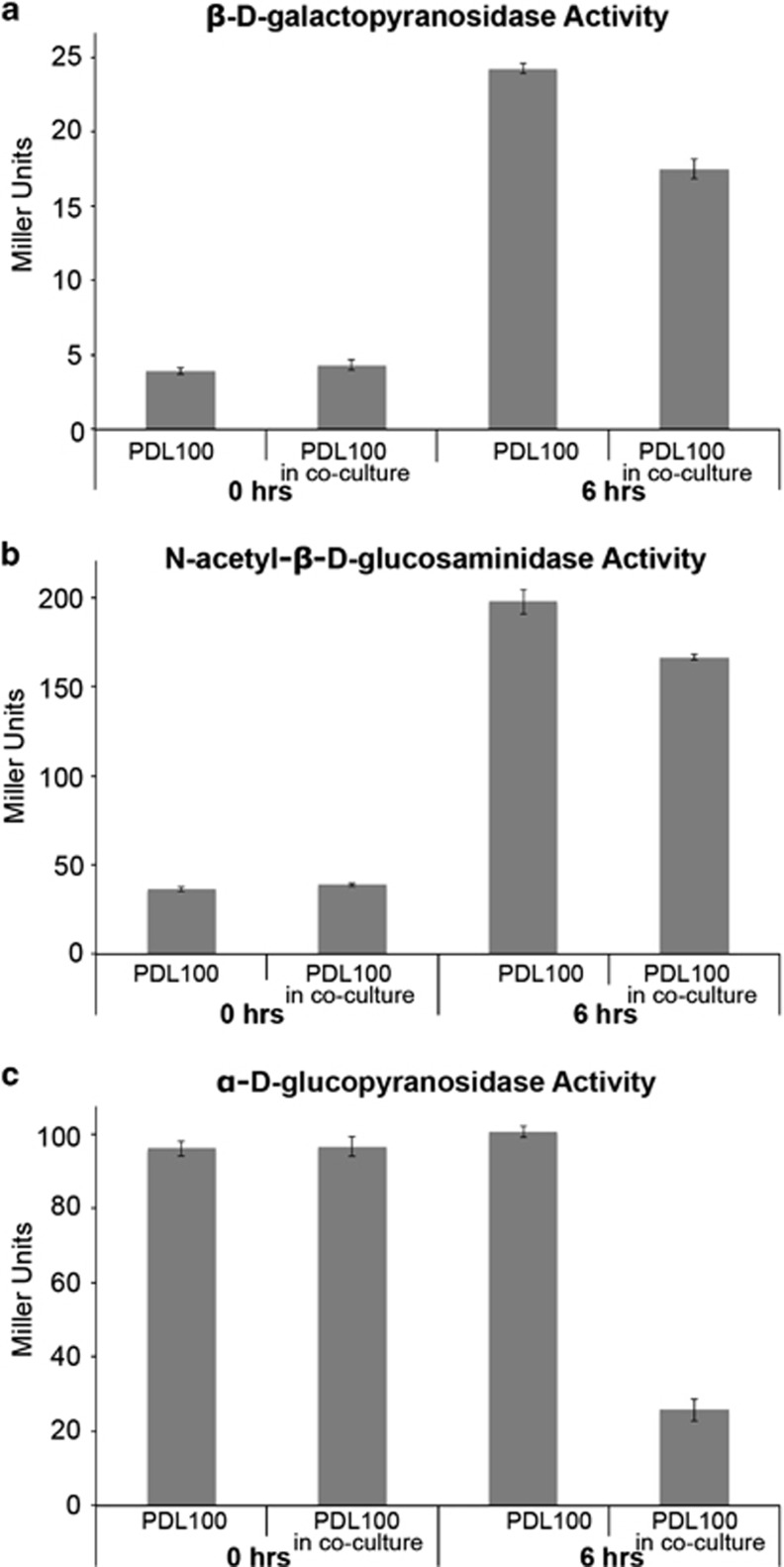Figure 5.
Inhibition of enzymatic activities in S. marcescens PDL100 by Exiguobacterium sp. 33G8. Exiguobacterium sp. 33G8 was grown in coculture with PDL100 to test for inhibition of the enzymatic activities that are normally induced in S. marcescens grown on mucus of A. palmata. As detailed in Materials and methods, within the coculture, bacteria were separated with a dialysis membrane (MWCO: 1 000 000) for the ease of recovering cells for enzymatic assays. The dialysis pouch pore size was enough to retain cells but allow compounds produced by both organisms to pass through. Enzymatic assays for PDL100 (a) β-𝒟-galactopyranosidase, (b) N-acetyl-β-𝒟-glucosaminidase and (c) α-𝒟-glucopyranosidase activities were conducted at the time of inoculation and after 6 h of coculture using nitrophenyl substrates as in Miller, 1972. Enzymatic activities of S. marcescens PDL100 in a monoculture or in the coculture with Exiguobacterium sp 33G8 are shown. Experiments were repeated twice, each time with four technical replicates. Data from one replicated experiment are shown. There was no difference in initial activity between the treatments for each enzyme assayed. After coincubation for 6 h, S. marcescens PDL100 showed strongly significantly reduced enzymatic activities as a result of 33G8 for β-𝒟-galactopyranosidase (t4.2=9.340, P=0.0005) and α-𝒟-glucopyranosidase (t4.34=22.191, P<0.0001), and modestly significantly reduced activity of N-acetyl-β-𝒟-glucosaminidase (t3.27=4.410, P=0.0180).

